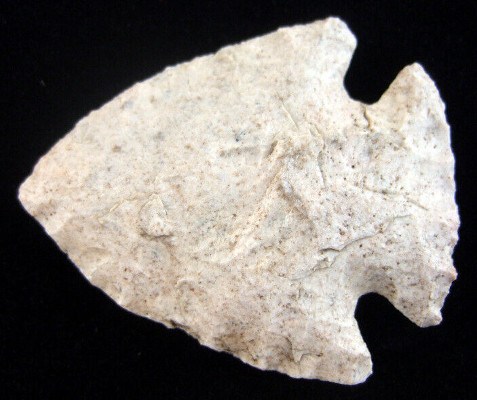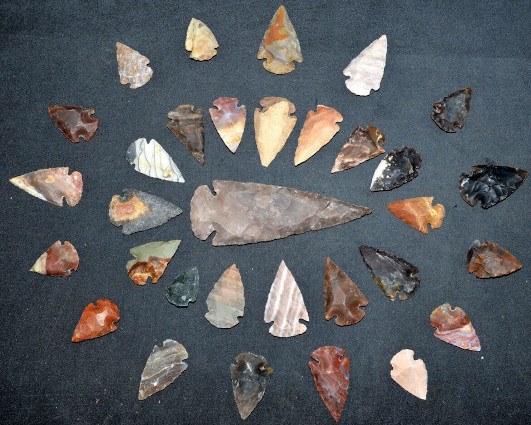If you're new to treasure hunting then searching for arrowheads is a great way to start. It's also an immensely fun activity.
Arrowheads were used by Native American tribes for thousands of years. They are still in use by tribes and enthusiasts trying to keep the tradition of arrow smithing alive. This means arrowheads are relatively easy to find. That is, of course, as long as you know what you're doing.
In order to help you with your search for arrowheads, we've put together this guide. We'll be detailing the most important concepts to keep in mind during your hunt. We'll also discuss the areas most likely to turn up these fascinating Native American artifacts.
- What Are Arrowheads?
- Where to Look for Arrowheads
- How Deep Are Arrowheads Buried?
- Tips for Finding Arrowheads
- Arrowhead Hunting Laws
What Are Arrowheads?

Arrowheads were pointed tools used by humans to capture and kill prey. Our earliest ancestors carved them out of stone and whatever other natural materials were available. As civilization progressed hunters began crafting arrowheads out of metal. Metal is the go-to material for most modern-day arrowsmiths, although some still prefer to work with stone.
Where to Look for Arrowheads
Certain artifacts can only be found in certain states. This is not the case with arrowheads. These artifacts have been discovered across the United States. This is advantageous because it means you won't have to travel to another town or city to have a shot at finding some.
Many early hunters relied on arrowheads to catch fish. This makes bodies of water extremely promising sites for a hunt. Try to focus your attention on smaller areas, such as streams and creeks. Caves have also proven fruitful. When you hunt for arrowheads in a cave, you may also find other tools left behind by former inhabitants.
Forests and fields are other popular hunting sites among arrowhead enthusiasts. Such sites tend to sprawl across many acres which increases the chances of a discovery.
How Deep Are Arrowheads Buried?
It's difficult to say for certain how deep arrowheads are buried. This is because there are a number of laws that forbid digging for arrowheads in the United States (more on that later). Thankfully, it doesn't really matter just how deep arrowheads go, as they can be easily found on the surface of fields and forests. This eradicates the need for digging and makes the only required tool a keen eye.
Tips for Finding Arrowheads
The following tips will help you achieve success:
Use a Metal Detector
Many people question the logic of using a metal detector to find arrowheads. After all, aren't many arrowheads made of stone? Yes, they are. However, the point of the metal detector in this scenario is not to alert you to the presence of an arrowhead. Rather, it is to alert you to the presence of other items that may indicate an arrowhead is close by.
So let's imagine you take a metal detector to a field and it doesn't beep at any point. This would suggest that there hasn't been a lot of human activity in the area. This, in turn, would suggest that there are no arrowheads present. If you can identify metal objects then it's a safe bet that the site was popular for living, cooking, and hunting.
Join a Club
Arrowhead hunting is a popular hobby. It has spawned countless in-person and online clubs. We strongly encourage any first time arrowhead hunter to join one of these clubs. Online forums are a great way to get tips and tricks for a successful hunt. In-person clubs will help you find productive locations near you.
Learn to Spot Fakes
It's important to remember that not every arrowhead you find will be authentic. A frustrating number of fraudsters get joy out of manufacturing fake arrowheads. They then leave these forgeries in known treasure hunting areas in the hopes of fooling people. Learning to separate a fake arrowhead from a real one is not all that difficult. You just need to remember the following points:
- Genuine arrowheads often have imperfect points. A perfect point is often an indicator of machine manufacturing.
- Research other arrowheads found in your area. If the arrowhead you found does not match the typical contraction pattern then it may be a fake.
- Enlist the help of a more experienced arrowhead hunter. Veterans can usually identify a fake with ease.
Share Your Discoveries

If you make a discovery in your search for an arrowhead then be sure to share it with the world! The arrowhead hunting community is extremely passionate about the hobby. As such, most members of the community love to see the artifacts uncovered by their fellow hunters. Furthermore, archaeologists often rely on discoveries made by hobbyist treasure hunters to piece together the history of specific locations. By sharing your find with the world, you can help shape our understanding of American history.
Arrowhead Hunting Laws
Hunting for arrowheads in public places can be a little tricky. Federal laws prohibit the excavation of any item of historical significance that appears to be more than 100 years old. Many arrowhead hunters turn a blind eye to this law or plead ignorance if they get caught, but we don't recommend doing this. If you want to take home the arrowheads you discover, then you should limit your hunt to private property.
Many metal detector hobbyists like to indulge in the hobby in state parks. The specific laws relating to state parks vary from state to state. In some parts of America, you can hunt for arrowheads on state land without fear of repercussion. In others, you could end up with a hefty fine for even picking one up.
If you're considering searching for arrowheads in a state park, then you should contact the park authorities beforehand. They'll be able to tell you if the activity is allowed within park grounds.
Private Property
Hunting for arrowheads on public property can be a challenge. This is because the activity is governed by strict laws. Thankfully, these laws do not apply to hunting on private property. If you are treasure hunting on private property, then it's absolutely essential that you get the permission of the landowner. Failure to do so can get you in trouble.
If somebody grants you permission to search for arrowheads on their property then you should be sure to get it in writing. Written permission isn't strictly necessary, but it's the only way to avoid legal disputes. Your written agreement should also detail how you and the landowner will divide any finds you make on their property.
Conclusion
Few relics are more plentiful across America than arrowheads. Some see this as a disadvantage, as this high concentration means decreased value. But if you ask us, it's nothing but a positive. Because arrowheads are so common, you won't have to worry about losing out to another treasure hunter. No matter what your level of experience is or where you are in the country, you can find success searching for arrowheads.
